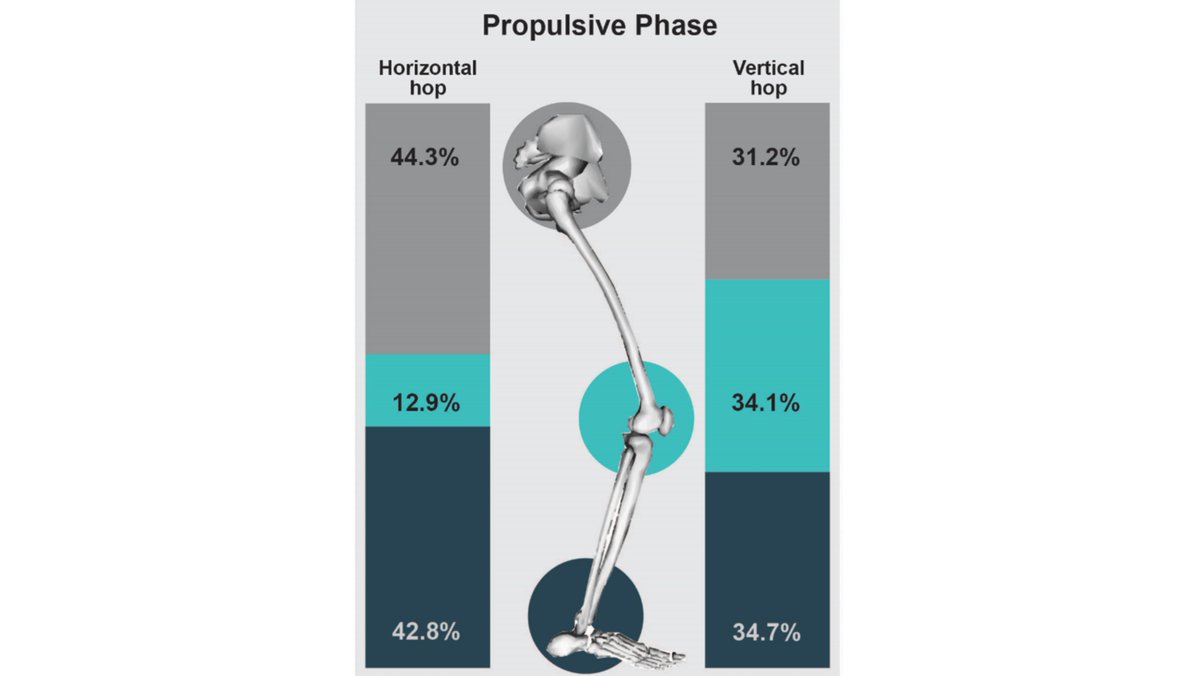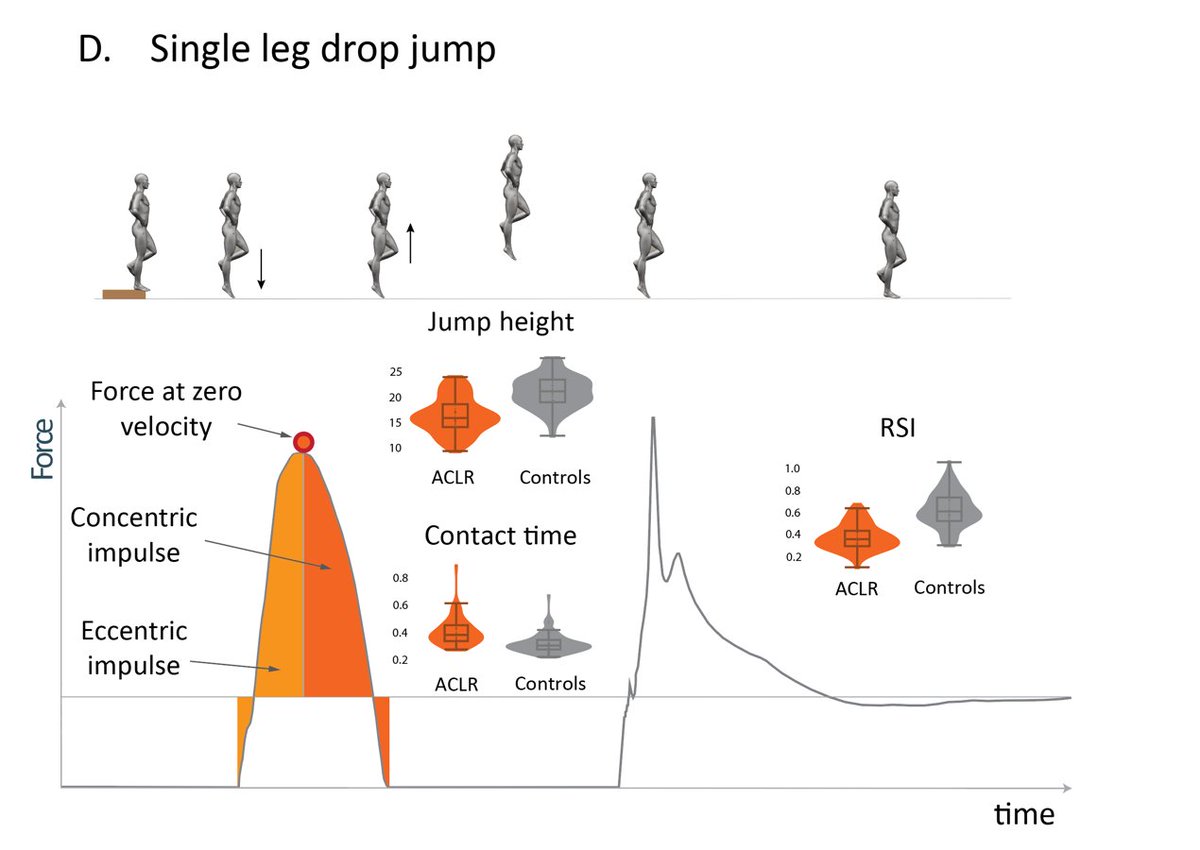Which performance metrics DON’T normalize at #RTS after #ACLR?
Spoiler: jump height and Reactive Strength Index during a single leg drop jump
What are we missing?
#OpenAccess🔓#OnlineFirst
🔗bjsm.bmj.com/content/early/……
Check this thread! 👇
Spoiler: jump height and Reactive Strength Index during a single leg drop jump
What are we missing?
#OpenAccess🔓#OnlineFirst
🔗bjsm.bmj.com/content/early/……
Check this thread! 👇

Why vertical jumps?
In our previous work, we found that vertical jump performance (height) is a more representative metric for knee function than horizontal hop performance (distance) in healthy individuals.
bit.ly/3wRgDCJ
In our previous work, we found that vertical jump performance (height) is a more representative metric for knee function than horizontal hop performance (distance) in healthy individuals.
bit.ly/3wRgDCJ

What is going on with athletes after #ACLR at the time they are cleared to #RTS? So, we studied their biomechanical status during a single leg vertical jump and the reactive phase of a single leg drop jump 

During the propulsion of a single leg vertical jump, in terms of biomechanics the knee work symmetry was 75%. In terms of performance the symmetry was 83% 

During the single leg drop jump, the symmetry in knee work generation was 70%. In terms of performance, symmetry of jump height was 77% and for reactive strength index symmetry was 70% 

Remember, our athletes passed all the discharge criteria and they had 97% symmetry for hop distance.
It seems that vertical performance metrics can better identify interlimb asymmetries than hop distance and should be included in the testing battery for the #RTS
It seems that vertical performance metrics can better identify interlimb asymmetries than hop distance and should be included in the testing battery for the #RTS

Someone might say that measuring distance is easy but measuring height is not.
This argument might be valid 20 years ago, but now with the advances in technology, measuring jump height is also very easy.
We use @forcedecks in our everyday clinic
This argument might be valid 20 years ago, but now with the advances in technology, measuring jump height is also very easy.
We use @forcedecks in our everyday clinic

But you can as well use @MyJumpApp in your mobile 



We used #EMGmodeling to estimate the individual muscle forces.
Lateral hamstrings muscle contribution was greater in the involved compared to the uninvolved limb and controls.
#Soleus contribution was bilaterally lower in the ACLR group compared to controls.
Lateral hamstrings muscle contribution was greater in the involved compared to the uninvolved limb and controls.
#Soleus contribution was bilaterally lower in the ACLR group compared to controls.

Don’t forget the #soleus during rehab!
Soleus is a powerful muscle, important for athlete’s performance. Soleus seems also very important for unloading ACL in landing and cutting.
Great studies here 👇
onlinelibrary.wiley.com/doi/10.1111/sm…
go.nature.com/3uCO6SG
Soleus is a powerful muscle, important for athlete’s performance. Soleus seems also very important for unloading ACL in landing and cutting.
Great studies here 👇
onlinelibrary.wiley.com/doi/10.1111/sm…
go.nature.com/3uCO6SG

• • •
Missing some Tweet in this thread? You can try to
force a refresh
















